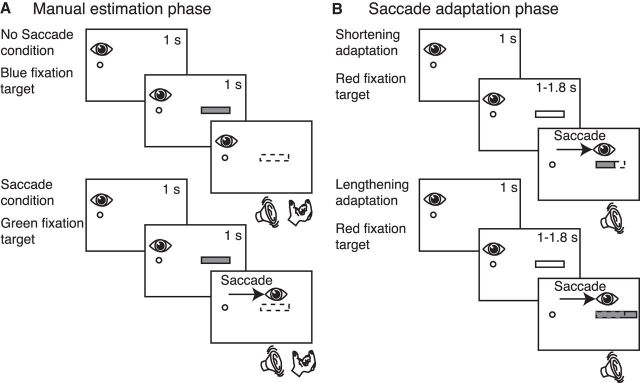Figure 2.
Task design. A, Manual estimation phase. Top row, No-saccade condition trial. Subjects were instructed to fixate at the blue fixation target shown as a small circle. After 1 s, a bar was flashed (gray rectangle) for 1 s; and following an acoustic signal, subjects had to indicate (while keeping fixation) the perceived size of the bar by the grip aperture. Bottom row, Saccade condition trial. Subjects fixated at the green fixation target. After 1 s, a bar was projected; and when an acoustic signal was activated, subjects were required to perform a saccade toward the bar and indicate the perceived size of the bar. As soon as the saccade was detected, the bar disappeared from the screen. B, Saccade adaptation. Top row, Shortening adaptation phase. At the beginning of the trial, the red fixation target was presented and the subjects' gaze was directed toward it. After 1 s, a red bar appeared, but subjects had to continue to fixate the fixation target. After a randomized time, an acoustic signal informed them to execute a saccade toward the bar. As soon as the saccade was detected, the bar was decreased in size by 30% of its length. Bottom row, Lengthening adaptation phase. It was structured in the same way of shortening adaptation phase with the difference that the bar was increased in size by 30% during saccade execution.

